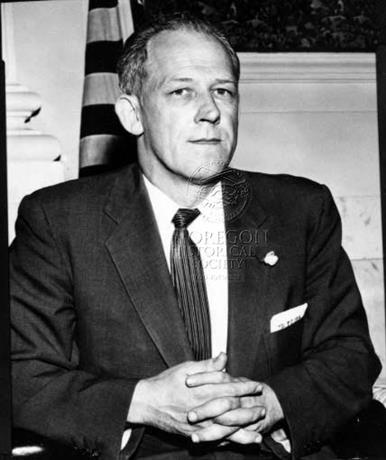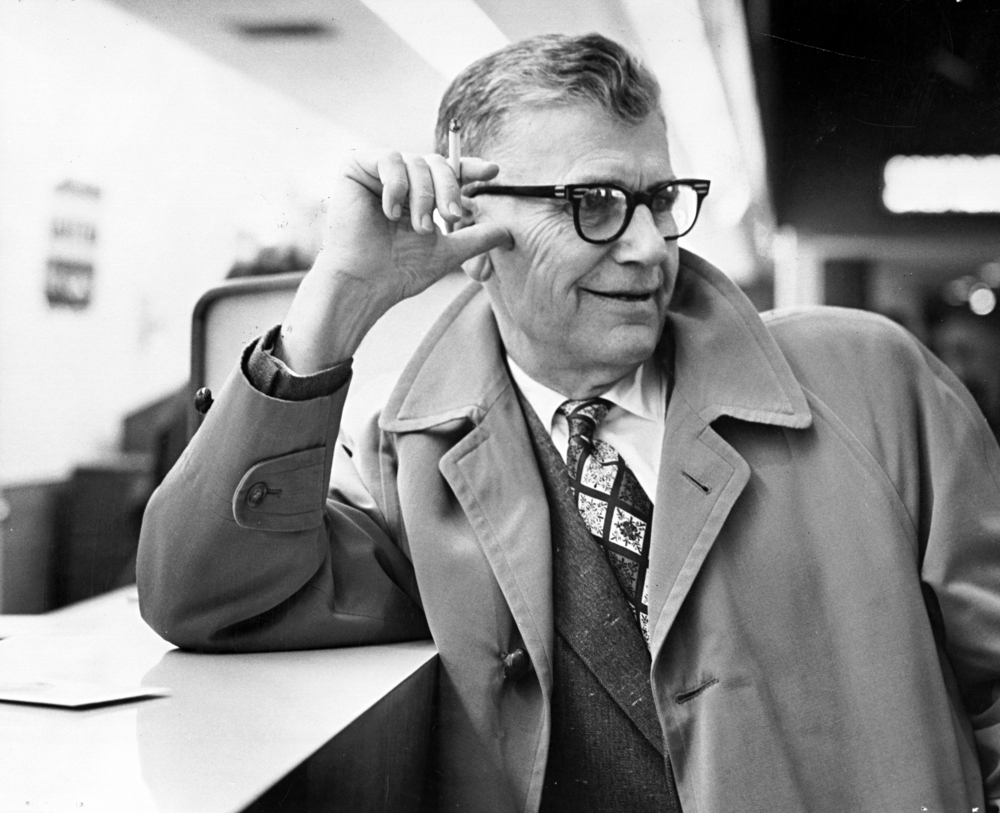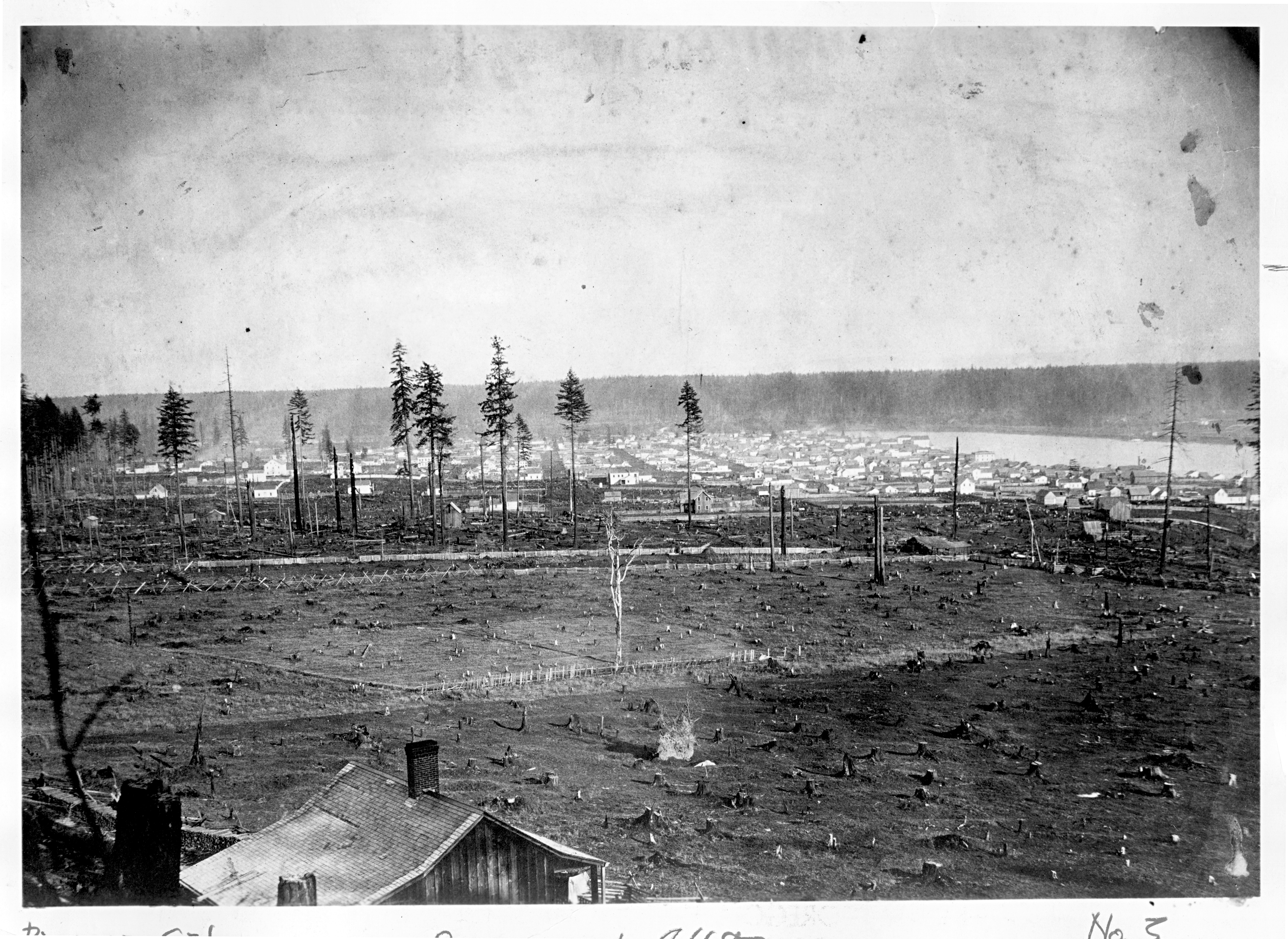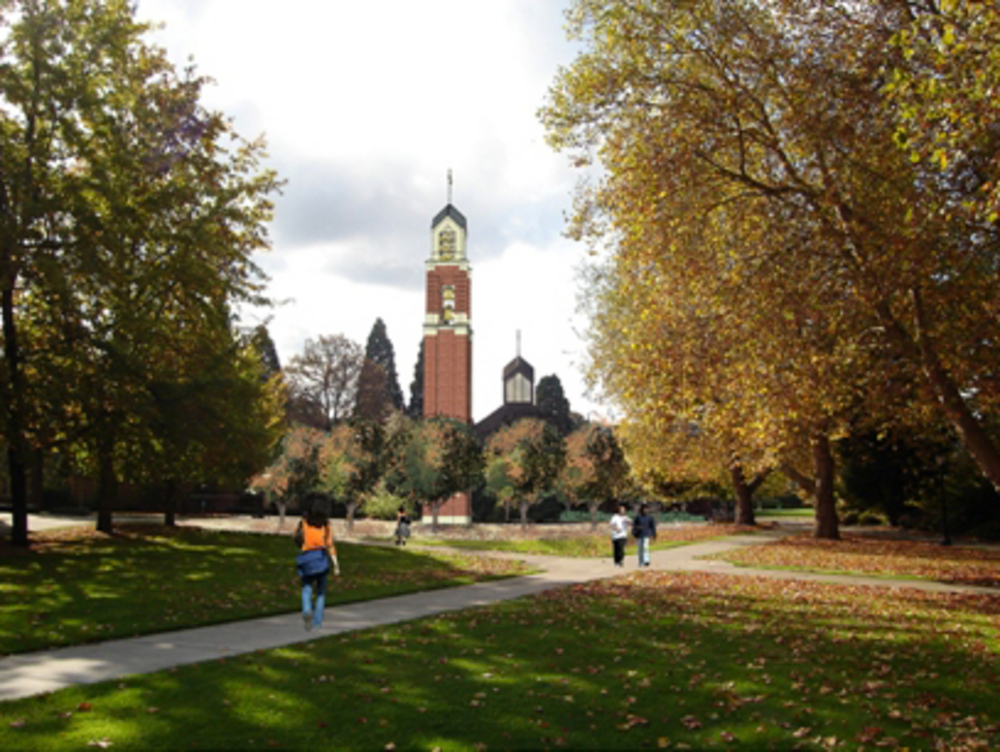Terrence Doyle "Terry" Schrunk served as mayor of Portland for sixteen years, from 1957 to 1972. It was a time of business growth and redevelopment for the city, and Schrunk's tenure as mayor was one of the longest in Portland's history.
Shrunk was born on March 10, 1913, on a farm near Stayton. His family moved to Portland's St. Johns neighborhood in 1921, and he graduated from Roosevelt High School in 1932. He attended the University of Portland from 1933 until joining the Portland Fire Bureau in 1935. Continuing his college work during the summer and through correspondence courses, Schrunk received a degree in economics and political science from the University of Oregon in 1942. He married Virginia Dorothy Price in 1936; the couple had three children.
In 1942, Schrunk joined the U.S. Navy, where he served on the aircraft carrier USS Ticonderoga and gained the rank of lieutenant. He received the Purple Heart and Silver Star for heroism in 1945, when he was wounded by shrapnel from a Japanese bomb.
Returning to Portland after the war, Schrunk rejoined the Fire Bureau and was soon promoted to captain. In 1949, following the recall of Sheriff Mike Elliott for making misrepresentations during his campaign, Multnomah County commissioners appointed Schrunk sheriff. He subsequently won election for sheriff and in 1956 ran for mayor. He defeated Mayor Fred Peterson in a heated campaign that included charges of both candidates' links to organized gambling.
The controversy—tied to newspaper and official investigations into racketeering in the city—followed Schrunk into the mayor's office. He was charged with perjury when he denied in grand jury testimony that he had accepted a bribe from gambling figures while he was sheriff. He was acquitted in 1957.
As mayor, Schrunk actively backed Portland's business and infrastructure development. He supported a merger of the Port of Portland and the city's Commission on Public Docks; increased relations with Asia, including establishing a sister-city program with Sapporo, Hokkaido, Japan; and oversaw urban renewal and the creation of public transit (today's TriMet) to replace the private bus system. During Schrunk's tenure, Memorial Coliseum was constructed, a number of high-rise office buildings were built, and low- and middle-income housing received attention. He was unsuccessful, however, in his advocacy of a city income tax and the consolidation of city and county governments.
Schrunk was president of the U.S. Conference of Mayors in 1968-1969 and a member of the executive board of the American Executive Committee of Japan-American Conference of Mayors and Chambers of Commerce Presidents. He won easy re-election as mayor three times before announcing his retirement in 1972, citing growing health concerns that included back problems resulting from his wartime injury. He was succeeded as mayor by Commissioner Neil Goldschmidt.
Schrunk died on March 4, 1975, following a heart attack. Terry D. Schrunk Plaza, adjacent to City Hall, was dedicated to his memory in 1977.
-
![]()
Portland's Mayor Terry Schrunk on witness stand in bribery and perjury trial, 1957..
-
![]()
Mayor Terry Schrunk and Evangeline Philbin with replica of seal to advertise the Oregon Centennial, 1958..
Oregon Historical Society Research Library
-
![]()
Gov. Hatfield and Mayor Terry Schrunk (on left) walk over the ice arena bridge at Lloyd Center Grand Opening, 1960..
Oregon Historical Society Research Library
-
![Mayoral campaign literature for Terry Shrunk.]()
Schrunk, Terry, mayorial advert, bb005787.
Mayoral campaign literature for Terry Shrunk. Oreg. Hist. Soc. Research Lib., bb005787
Related Entries
-
![Coin Machine Men]()
Coin Machine Men
The Coin Machine Men of Oregon was a statewide trade association of pin…
-
![Fred Peterson (1896-1985)]()
Fred Peterson (1896-1985)
Fred L. Peterson, a Portland city commissioner for twelve years, was el…
-
![Neil Goldschmidt (1940-)]()
Neil Goldschmidt (1940-)
Neil Edward Goldschmidt, the thirty-third governor of Oregon (1986-1991…
-
![Port of Portland]()
Port of Portland
The Oregon Legislature created the current Port of Portland in 1970 by …
-
![Portland]()
Portland
Portland, with a 2020 population of 652,503 within its city limits and …
-
![University of Portland]()
University of Portland
"Founded on a bluff and run on that principle," as historian Jim Covert…
-
![Veterans Memorial Coliseum]()
Veterans Memorial Coliseum
Veterans Memorial Coliseum is a 12,000-seat arena on the east bank of t…
Related Historical Records
Map This on the Oregon History WayFinder
The Oregon History Wayfinder is an interactive map that identifies significant places, people, and events in Oregon history.
Further Reading
Lansing, Jewel. Portland: People, Politics, and Power, 1851-2001. Corvallis: Oregon State University Press, 2003.














